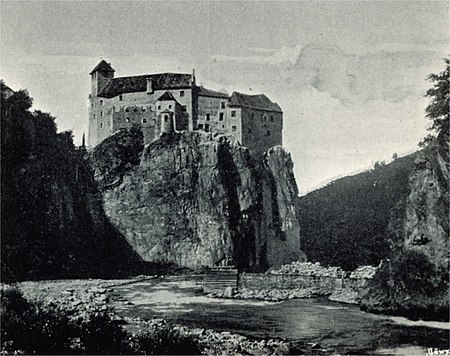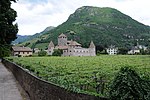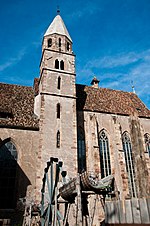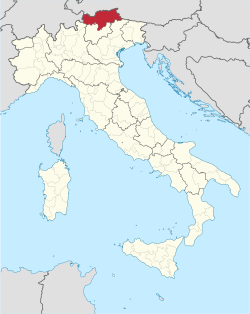Runkelstein Castle
13th-century fortificationsBuildings and structures in BolzanoCastles in South TyrolCommons category link is defined as the pagename

Runkelstein Castle (German: Schloss Runkelstein; Italian: Castel Roncolo) is a medieval fortification on a rocky spur in the territory of Ritten, near the city of Bolzano in South Tyrol, Italy. In 1237 Alderich Prince-Bishop of Trent gave the brothers Friedrich and Beral Lords of Wangen permission to construct a castle on the rock then called Runchenstayn.
Excerpt from the Wikipedia article Runkelstein Castle (License: CC BY-SA 3.0, Authors, Images).Runkelstein Castle
Kaiser Franz Josef Weg, Ritten - Renon
Geographical coordinates (GPS) Address Phone number Website External links Nearby Places Show on map
Geographical coordinates (GPS)
| Latitude | Longitude |
|---|---|
| N 46.517222222222 ° | E 11.358888888889 ° |
Address
Castel Roncolo - Schloss Runkelstein
Kaiser Franz Josef Weg
39054 Ritten - Renon
Trentino-Alto Adige/Südtirol, Italy
Open on Google Maps











